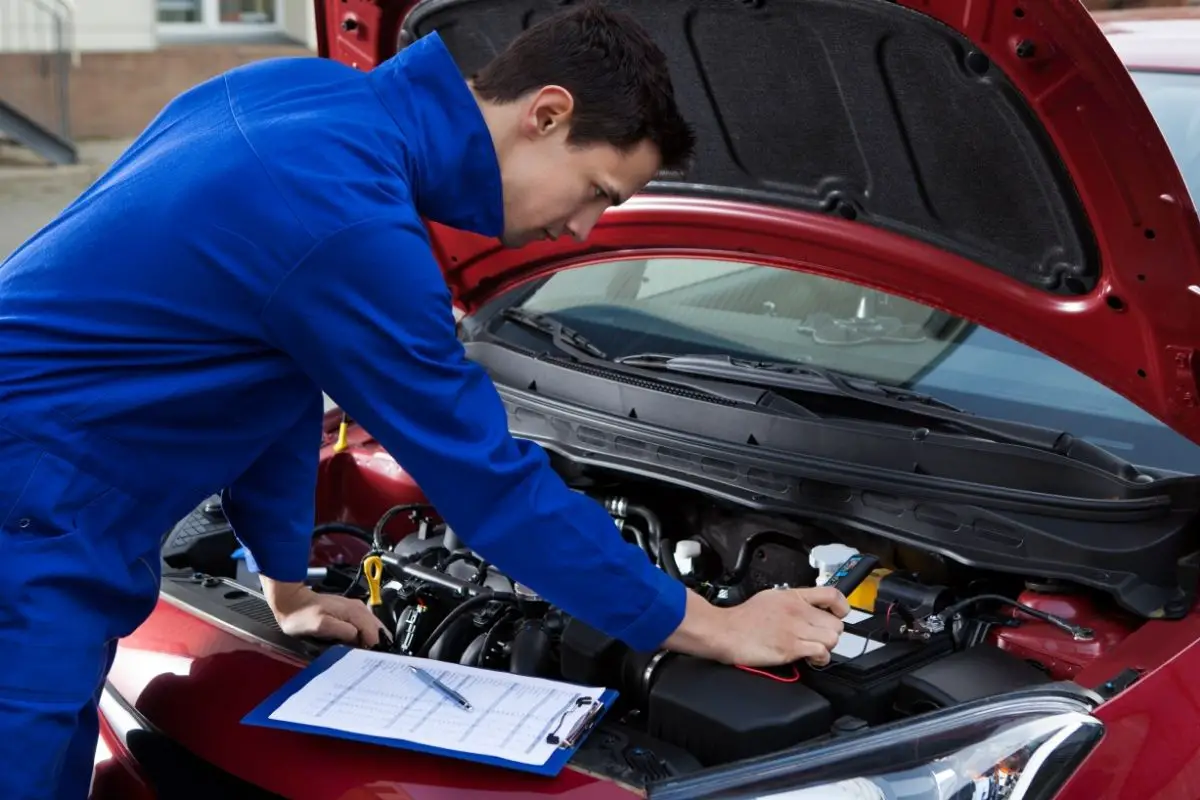Vapor Lock can be an unexpected pain when it comes to your boat. But just what exactly is it and how do you fix it?

Fear not, here we cover the problem of vapor lock and the best way to overcome it.
Vapor Lock
What Is It?
A vapor lock occurs when liquid fuel becomes a gas before it reaches the carburetor or the fuel rail.
The reason why this happens is due to the fact that the fuel is heated to the point where it becomes a vapor.
In a boat, vapor lock is caused by the evaporation of fuel within the fuel line.
How Does It Happen?
When the fuel enters the fuel line, it will be pumped by the fuel pump. However, since the fuel has turned into vapor, the fuel pump cannot effectively pump the fuel.
As a result, the fuel stops flowing through the fuel line. It can be particularly common with lower octane fuels.
Vapor lock is most common when the motor can’t cool the fuel before it reaches the fuel line in time.
Symptoms
If you notice one of these symptoms, then you have a vapor lock:
- Loss of power
- Difficulty starting the engine
- Stalling
What Causes Vapor Lock?
There is one main reason behind vapor lock. It’s caused by excessive heat.
When you go to pump gas in scorching conditions, the fuel turns into vapor due to evaporation. So, the problem is really just that the boat has overheated.
The best way to prevent this from happening is to keep the engine cool.
This is more common on boats since they spend the majority of their time in direct sunlight which can cause overheating.
How Can I Prevent Vapor Lock?
To avoid vapor lock, make sure that the engine does not get too hot. If the temperature gauge on the dashboard reads high, then you need to take action immediately.
The easiest thing to do is to turn off the ignition switch until the engine cools down.
If a vapor lock has happened in your car, which is also possible, and you’re driving around town, you may want to pull over so that you don’t cause traffic problems.
A good idea would be to open all the windows and doors so that the air circulates freely through the car.
Another option is to drain the cooling fluid out of the radiator. Then refill the radiator with fresh coolant. This is also a good solution for vapor lock in a boat.
Whether vapor lock is an easy fix or not depends on what kind of engine you have and the level of damage done.
Should vapor lock cause severe damage then you’ll have to fix your entire engine. Some engines can be fixed easily while others require more work.
For example, if you have a V6 engine, then you might be able to fix it simply by replacing the fuel filter.
On the other hand, if you have a 4 cylinder engine, then you might need to replace the entire block.
However, if you have a small engine like a 1.3-liter engine, then, again, you might only need to change the fuel filter.
How Can I Fix Vapor Lock?

If you are not able to get the engine to cool down naturally, then you should open the engine cover and turn off the ignition switch.
Then, you should let the engine cool down. Once the engine has cooled down, you can start the boat or vehicle again.
The next step is to fill the radiator with fresh coolant. Make sure that you use the right type of coolant.
For example, if you are using antifreeze, then you should use only antifreeze. Never mix coolants.
Finally, you should replace the air filter. This will ensure that the engine gets all the oxygen that it needs.
If the engine runs too hot, then it will produce more carbon dioxide than normal.
And because of this, there won’t be enough oxygen in the atmosphere for the engine to burn, limiting performance.
In a boat engine, the best way to fix the vapor lock is by doing the same.
Opening the engine cover will allow hot air to leave and allow for immediate engine cooling, though it will take a few minutes.
In order to avoid vapor lock altogether, high engine compartments with ventilation are an excellent design and safety feature that helps to avoid vapor lock.
Is Vapor Lock Dangerous?
Yes! If the engine overheats, then you could end up having a fire.
Make sure that you know how to properly shut off the engine, especially if you are driving in an area that doesn’t have access to emergency services.
You should also check your oil level frequently. This is because if there isn’t enough oil, then the engine won’t be lubricated well.
You should also check the spark plugs to see if they are sparking correctly. If they aren’t, then you should change them.
Final Thoughts
There are two ways to tell when your engine has a vapor lock. First, you can look at the dashboard.
If the temperature gauge reads high, then you probably have a vapor lock. Second, you can listen carefully to the sound of the engine.
If you hear any unusual loud noise coming from inside the engine compartment, then you probably have a problem.
Vapor lock is usually a temporary problem.
However, if you notice that the engine continues to overheat after doing everything possible to correct the issue, then you should consider getting the boat checked out by a professional.
This happens because some boats are designed with minimal room to be compact. They lack proper ventilation or cooling systems.
In these cases, the engine overheats very quickly. If this happens to you, then you should seek help as soon as possible.
It’s always best to call a professional before trying to repair something yourself.
Even though you might think that you can fix the problem, you could actually damage the engine.
- How To Make A Piston - May 12, 2022
- What Is A Vapor Lock? - May 12, 2022
- 19 Boater Gift Ideas – Must Haves For A New Boat Owner - February 2, 2022


